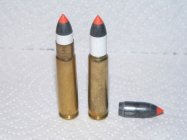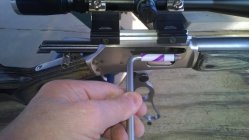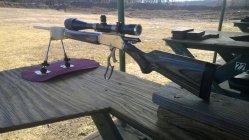Doesn't primer impulse move the bullet and powder forward changing all this?
Came across this Army Research Lab report.
Pg 16 of that report states
"(i.e., the propellant bed acts as an incompressible fluid when initially acted upon by the primer output)."
So it makes sense the bullet moves as soon as the primer is set off.
Great report to read since there was a discussion recentoy regarding this and when the bullet actually begins to move or engage the rifling
Upon primer initiation
or
After Enough pressure has been built up by the primer igniting the powder and the powder beginning to burn.
----------------------------------
The position Where we START the bullet from though, still plays a role within the ramp up of the pressure curve relative to its exit timing.
Or--- it would be incorrect to think that
1. The primer goes off
2. the bullet hits the rifling and then completely stops
3. pressure has t09 build up again for it to start moving
4. then it accelerates on out the bore
-------------------------------------
When instead
1. The primer going off gets the bullet going due to the powder column pushing against its base....
2......it may slow down as it engages the rifling, but pressure is rapidly building and even though it may slow down as soon as it hits the rifling some, it is still continually moving.
3. Therefore, where we START the bullet off from, is still important since the exit timing will change with respect to its initial seating depth.
-------------------------------------
Otherwise, seating depth would be completely irrelevent and any bullet exit timing "TUNING"
would be solely dependent upon freebore distance
and as we all can prove, all things staying the same.....when changing seating depth alone, shows changes in bullet POI and shot to shot dispersion (Aka: accuracy)
-------------------------------------
Conversely: I can take a really good tight shooting load, and turn it into a bad shooting 1 MOA+ load
just by changing seating depth alone.













